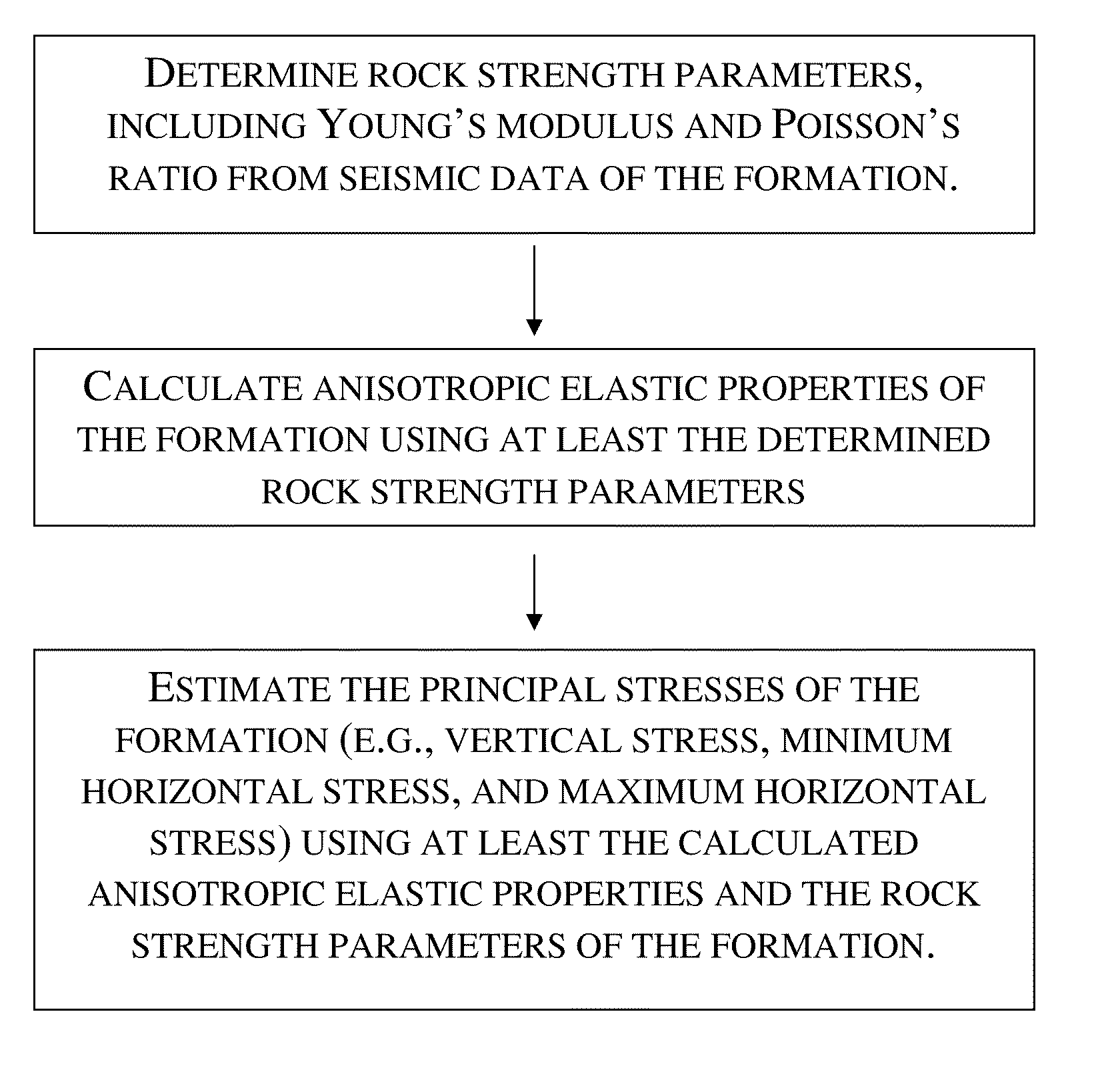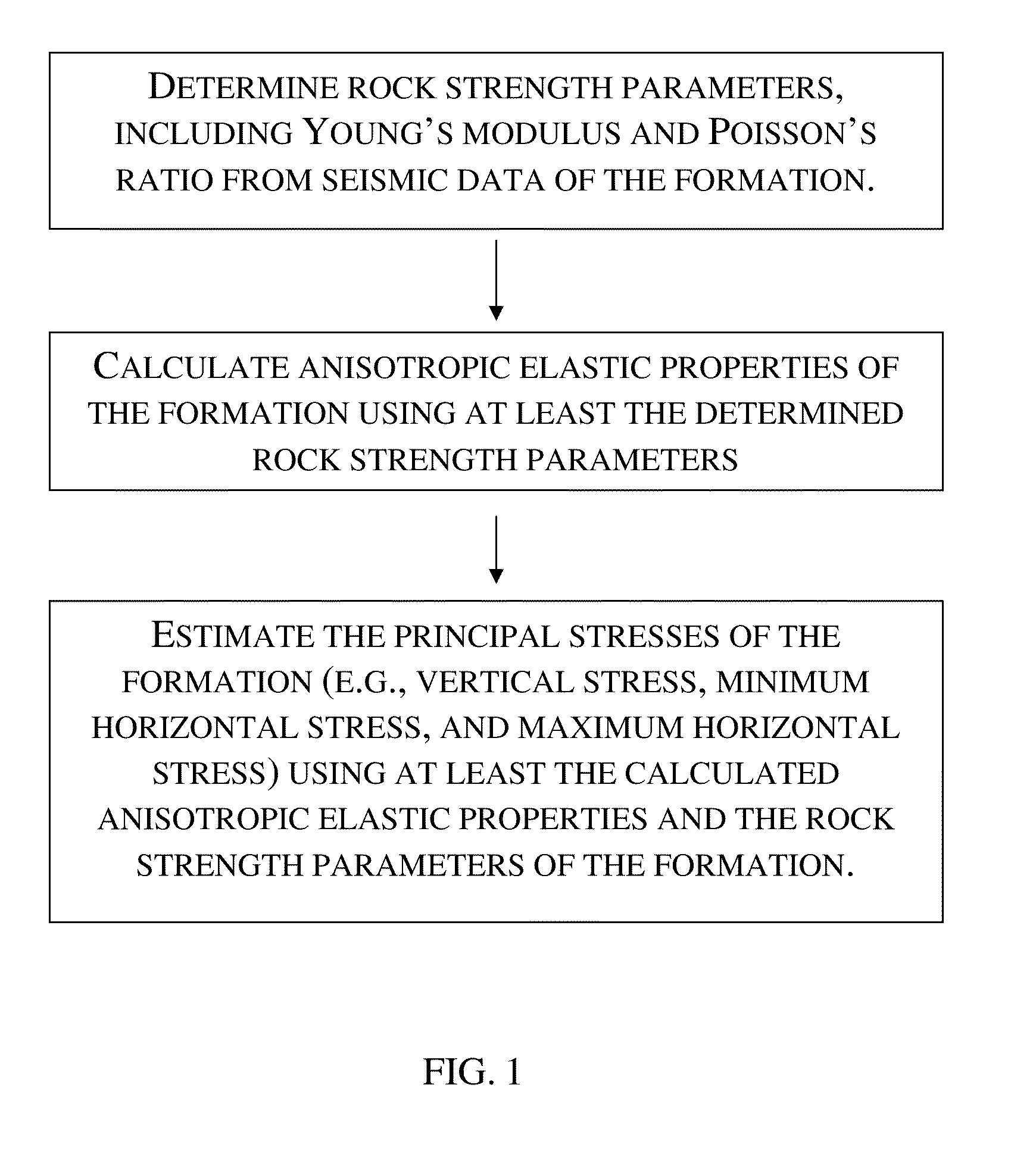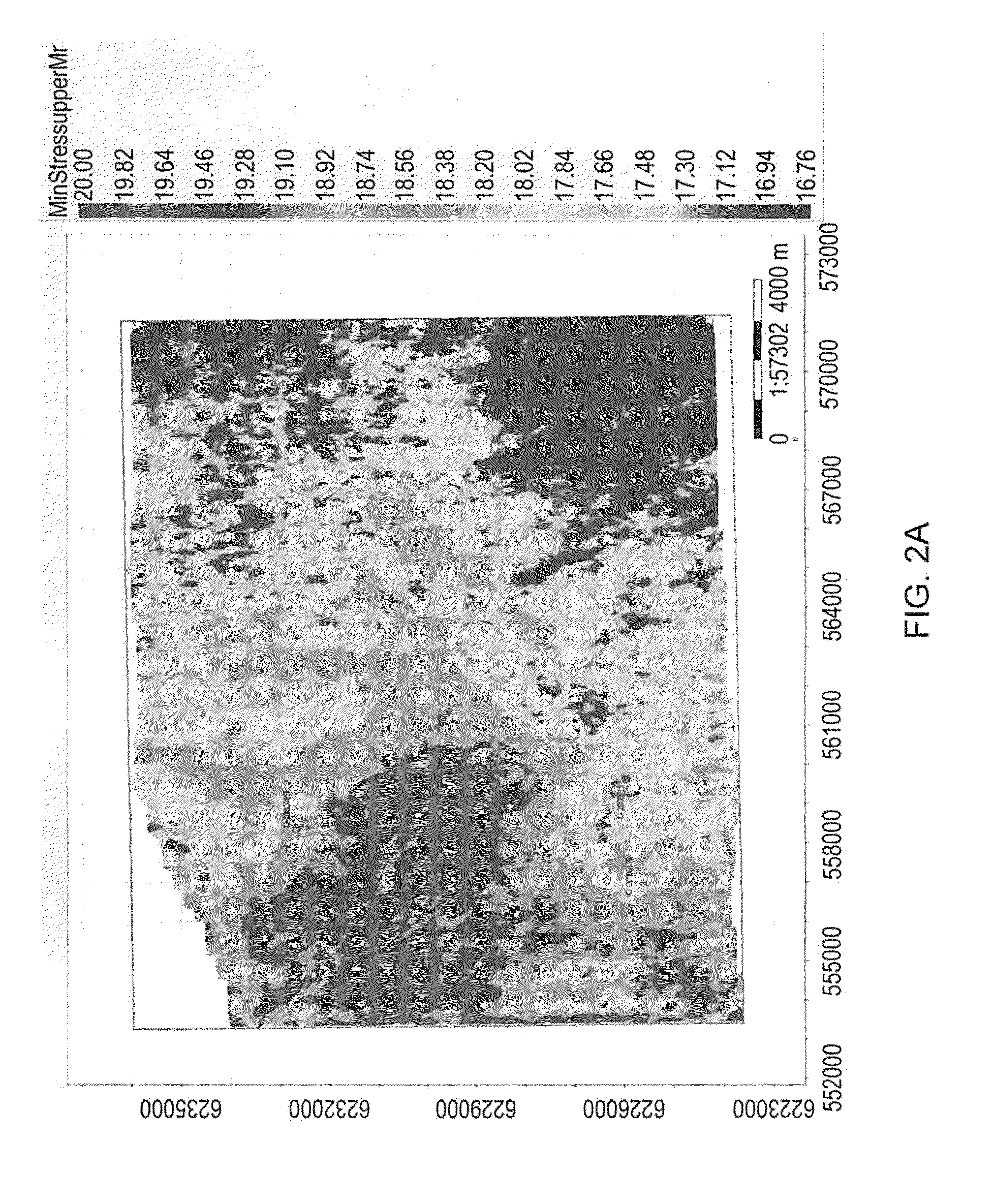Methods and systems for estimating stress using seismic data
a seismic data and stress technology, applied in the field of geophysics, can solve the problems of inability to consider large-scale vertical fracturing and lateral variations of such fracturing within the subterranean formation, and the inability to match the field measurements of in-situ stress, and the inability to consider large-scale vertical fracturing and lateral variations of such fracturing
- Summary
- Abstract
- Description
- Claims
- Application Information
AI Technical Summary
Benefits of technology
Problems solved by technology
Method used
Image
Examples
first embodiment
[0033]FIG. 1 illustrates a method for estimating principal stresses of a subterranean formation. In estimating the principal stresses from seismic data, the present invention recognizes that there are seismic terms involved in Hooke's law, which represents a fundamental relationship relating elastic strain to stress, which governs hydraulic fracturing, i.e., the deformation (strain) and fracturing of rock is caused by stressing it with hydraulic pressure. The relationship between stress and strain is controlled by the elastic properties of the rock. When working with a three-dimensional stress state, the generalized form of Hooke's law can be inverted to obtain a relation for the strain, ε, in terms of stress, σ. That is, the strain, ε, on a subterranean formation is a function of its stress, σ, times its effective elastic compliance tensor S:
εij=Sijklσkl with i,j,k,lε1,2,3 (1)
where:
[0034]ε: the strain on a fractured subterranean formation
[0035]σ: stress experienced by the formatio...
second embodiment
[0097]In another embodiment, a tectonic strain term, εtect, is introduced to allow for calibration of the horizontal stresses derived in equations (27) and (28) to a known reference point. In various basins around the world, the maximum horizontal stress is greater than the vertical stress. The relationship between the horizontal stress and the vertical stress represented by equations (27) and (28), however, does not closely reflect this nature of these basins because the horizontal stress in these equations is not greater than the vertical stress. As such, the invention introduces a tectonic stress term to resolve this by shifting the maximum and minimum horizontal stress by a defined amount.
[0098]In this embodiment, the tectonic effect is applied by imposing a constant, continuous, horizontal strain across different zones, as disclosed by Blanton, T. L. and Olson, J. E., 1999, “Stress Magnitudes from Logs: Effects of Tectonic Strains and Temperature” SPE Reservoir Eval. & Eng. 2(1...
PUM
 Login to View More
Login to View More Abstract
Description
Claims
Application Information
 Login to View More
Login to View More - R&D
- Intellectual Property
- Life Sciences
- Materials
- Tech Scout
- Unparalleled Data Quality
- Higher Quality Content
- 60% Fewer Hallucinations
Browse by: Latest US Patents, China's latest patents, Technical Efficacy Thesaurus, Application Domain, Technology Topic, Popular Technical Reports.
© 2025 PatSnap. All rights reserved.Legal|Privacy policy|Modern Slavery Act Transparency Statement|Sitemap|About US| Contact US: help@patsnap.com



